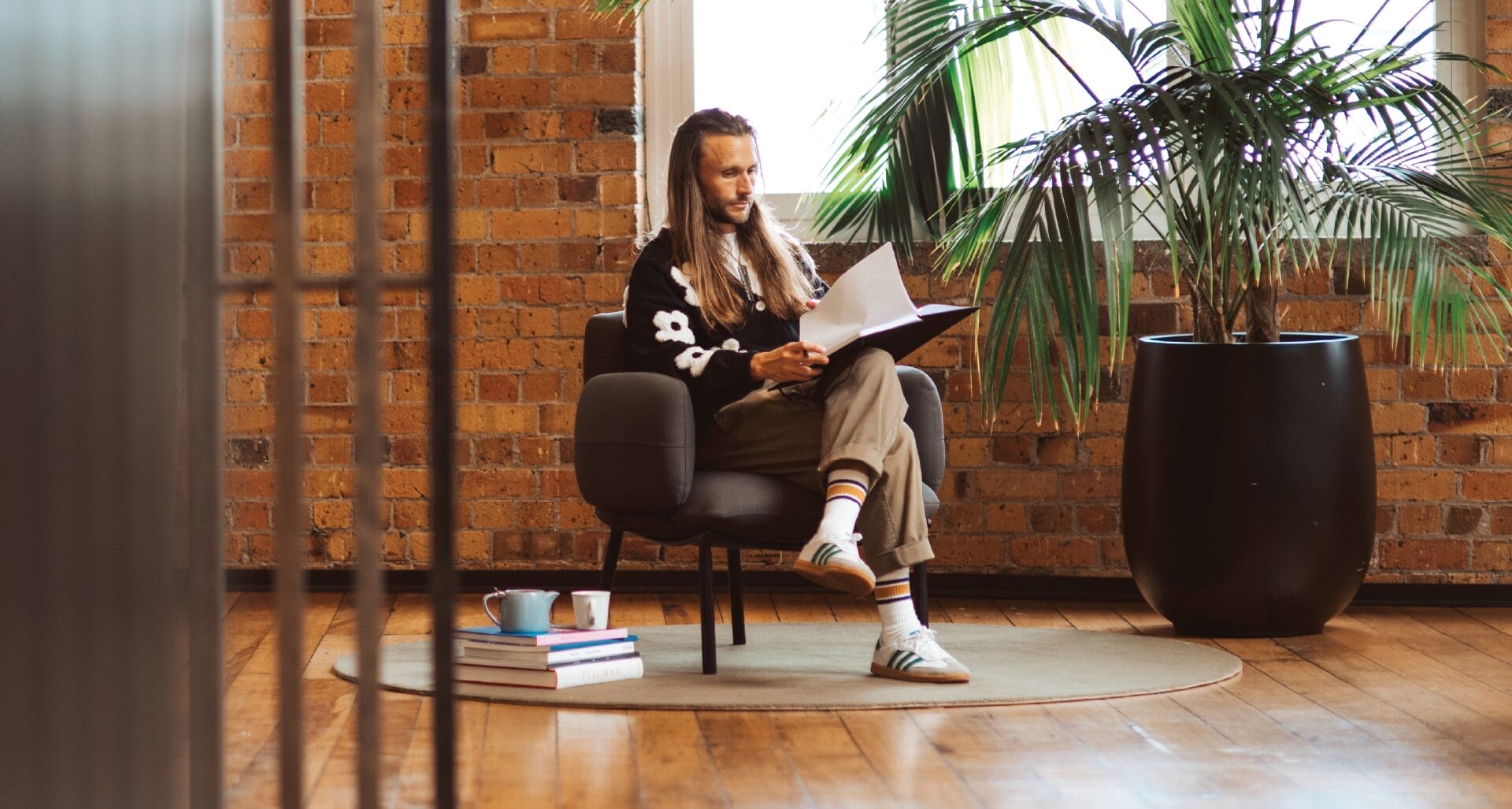When thinking about a new office chair, there are so many different factors to consider. Durability, ergonomics, and style all come into the equation, but one overlooked feature is the material of your seating.
Picking the best material for office chairs depends on your individual needs, your working environment, and how much maintenance you’re happy to do.
If you’re torn between leather, fabric, or mesh, let us help you decide. In this article, we’ll look at the pros and cons of each material and why each might be the right fit for you.
Mesh office chairs
Let’s start with one of the less common materials, mesh. Mesh is used in backrests as a mouldable, lightweight alternative to heavier materials.
Across the Buro range, chairs including the popular Buro Mantra, Buro Mentor, and Konfurb Luna all have mesh backs, complementing padded seating.
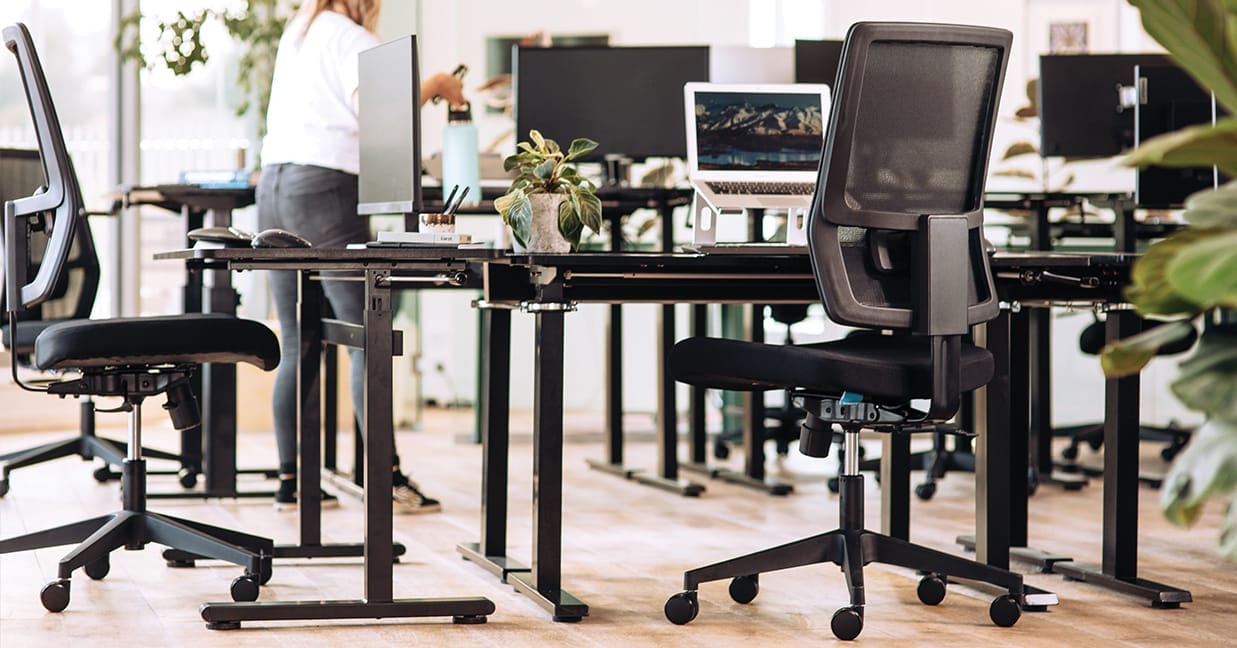
Buro Mantra mesh back chair in a coworking office.
The pros
While they might not look as comfortable as padded leather or fabric, mesh back chairs are just as comfy as any alternative. They’re flexible, mouldable, and adaptable.
What’s the best feature of a mesh chair? Breathability. High breathability keeps your back cool even in a warm Australasian climate. If you’re all about airflow, a mesh chair might be the right pick for you.
Another big plus is that mesh chairs are lightweight, making them easier to move than padded leather or fabric alternatives.
The cons
Mesh chairs might not provide the same level of back support as other materials, while some people may prefer the feel of heavily padded fabric or leather behind them.
Leather office chairs
The hallmark of luxury in the office, leather office chairs deliver an elegant look, ergonomic support, and a touch of sophistication to any setting.
Buro’s leather chairs include the Buro Persona 24/7, and the mighty Buro Maverick 24/7 Controller chair.
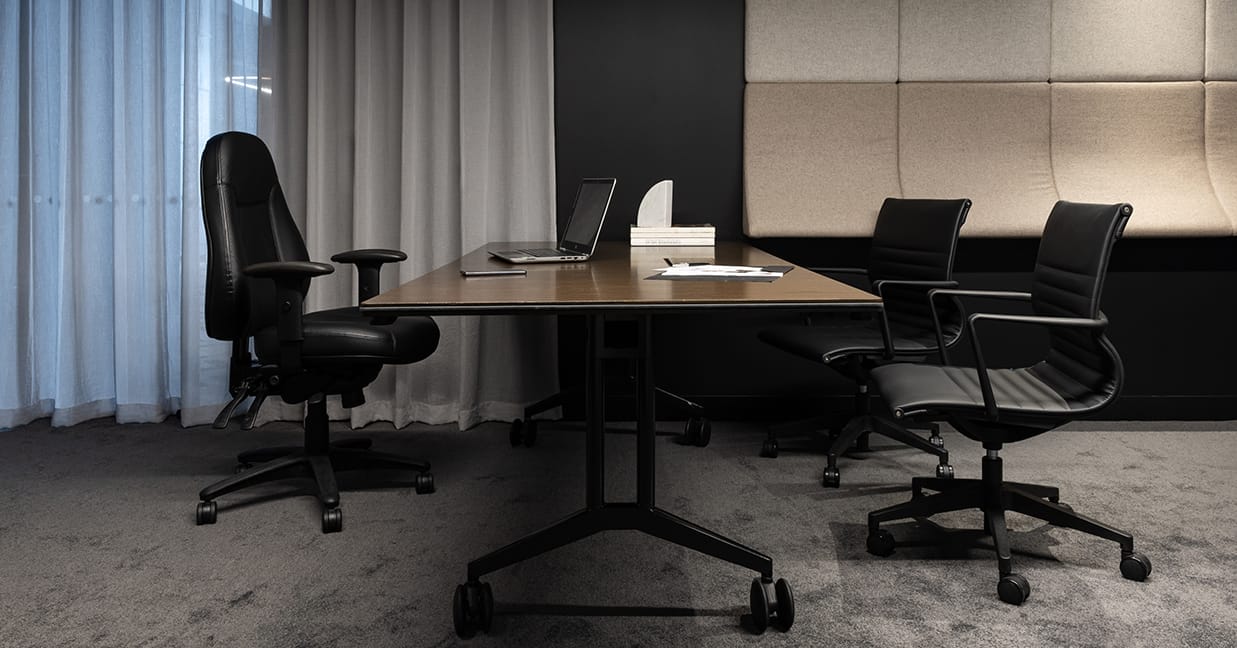
Buro Persona 24/7 leather chair with Buro Diablo PU Vegan Leather chairs.
The pros
Leather chairs are known for their comfort, with generous padding and a smooth-to-the-touch feel.
They’re also pretty easy to clean and maintain; spilled liquids and dirt can usually be wiped off with a damp cloth.
Leather is also popular because it’s durable; leather chairs are known to stand the test of time.
If you’re looking for eye-catching chairs to complete an executive board room or top-floor meeting room, leather brings style and authority to the table.
The cons
Leather is more expensive to produce than other materials like fabric or mesh, so buyers can expect a higher price tag.
They also lack the breathability of a mesh chair in the middle of summer and may be better suited to cooler or air-conditioned environments.
Leather is a great material, but it requires care. Regular maintenance is needed to keep your chair in the best condition possible.
If you have ethical concerns about the use of animal products, then PU leather may be a better option for you.
Soft seating and fabric
Fabric is another popular material used in office chairs. It’s a great all-rounder, combining support, functionality, and affordability.
Buro chairs including the Buro Roma High Back 24/7 and Buro Mentor Upholstered Nylon feature fabric over moulded foam backrests and seats, providing maximum comfort.
Fabric is one of the most versatile materials around, used in workplace waiting areas, social spaces, or relaxation spaces, in chairs like the Konfurb Orbit and the Konfurb Nebu Armchair.
Some fabrics, such as SafeTex, offer additional features, including antibacterial protection. The Buro Roma – HB SafeTex is impermeable to liquids and easy to maintain.
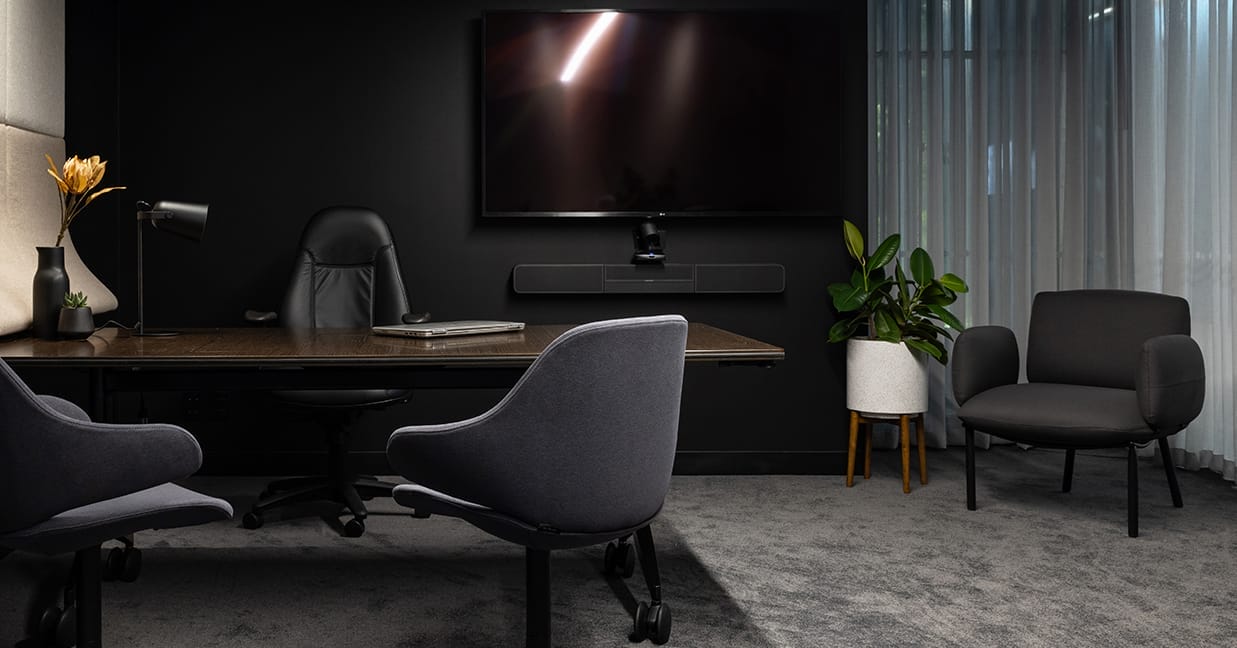
Executive office featuring the Buro Persona 24/7 office chair, Konfurb Orbit chairs and the Konfurb Nebu Armchair.
Our range of soft seating can be upholstered in locally produced fabrics.
The Konfurb Halo, Konfurb Block, and Konfurb Eightby4 are officially licensed Australia Made and New Zealand Made, helping designers create more ethical and sustainable spaces.
Liz Miles, Managing Director of Sustainable Living Fabrics, says organisations are increasingly focused on sustainability and longevity.
“Designers and architects are looking to create environments that are in harmony with nature and promote a sustainable future,” Liz says. “Wool upholstery helps to give a textured layered look that lends a warm, welcoming, and comforting ambiance to any office space.”
“When looking at textiles, durability, fit for purpose, sustainability, longevity, and recyclability are key,” she adds. “At Sustainable Living Fabrics, we aim to design quality Australian Made fabrics that will move with the trends but stand the test of time. Fashion can change, but quality and style endure.”
The pros
Upholstered fabric chairs are comfortable, hardwearing, and durable, making them a popular choice.
Fabric overlaid onto contoured moulded foam will give you great support and a smooth touch, offering some of the benefits of more expensive leather alternatives.
These chairs are a cost-effective option but they’re also built to last. Quality fabrics can withstand all-day, everyday use in a bustling workplace.
Fabrics are also more adaptable from a style perspective. Fabric chairs often come in a range of optional colours, offering you more of a say over the aesthetics of your office.
The cons
Fabric chairs are likely to stain as the material is more absorbent. If you work from home with young children around, a more wipeable material might be a better fit.
Fabric shares many of the benefits and downsides of leather. While fabric chairs have more padding than mesh back chairs, they don’t have as much breathability.
PU or vegan leather
Polyurethane leather (PU leather), also known as vegan leather, is made of a material called thermoplastic polymer. You get the best of both worlds: the soft touch of leather with greater affordability.
Chairs including the Buro Diablo feature high-quality PU leather, projecting the same sleek appearance without the additional cost.
Buro has helped companies including Majesty Mortgage and Insurance Advisors transform their office spaces with vegan leather.
Buro’s in-house upholstery team custom-upholstered seats and backrests of six Buro Mentor chairs in tan-coloured Eastwood fabric from Warwick.
Read more about Majesty’s story here.
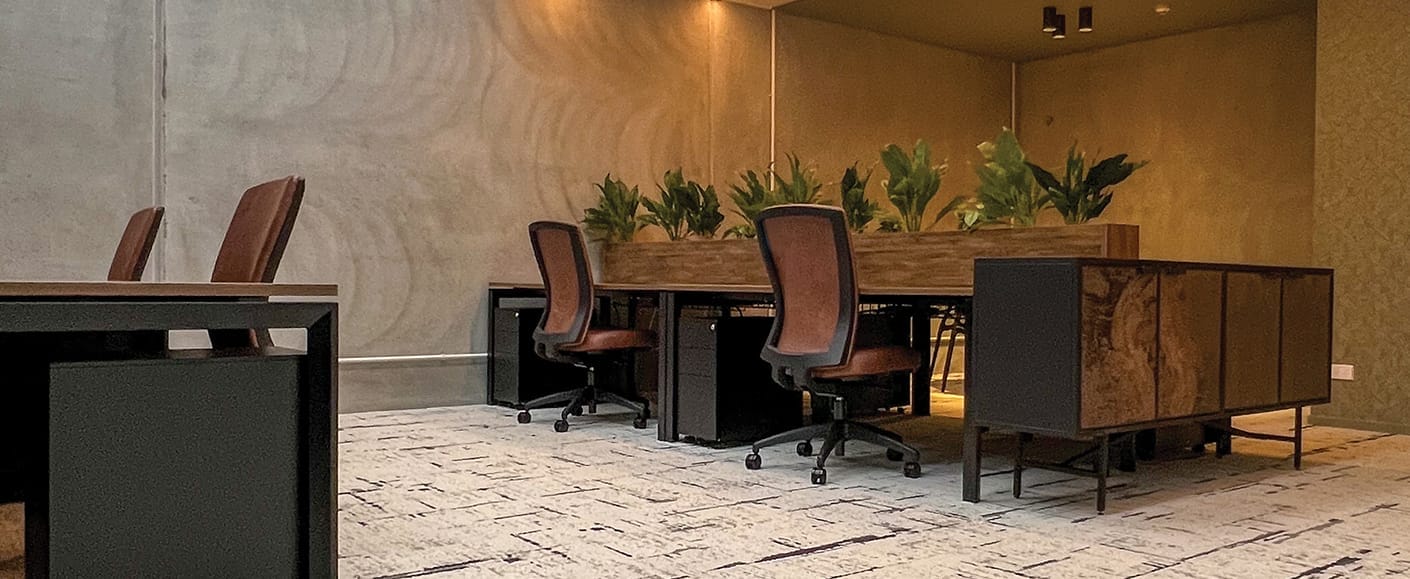
Buro Mentor chairs custom upholstered in tan vegan leather at Majesty Mortgage and Insurance Advisors.
Pros
PU leather has the look and feel of genuine leather, making it popular with people who want the same style without breaking the bank.
This material is easier to produce than real leather, making it more price-competitive.
Like real leather, it’s easy to clean. PU leather doesn’t absorb moisture, making it easy and convenient to maintain after a coffee spill.
PU leather is often available in different prints and colours, making it a versatile option for designers.
For people with ethical concerns over real leather, PU is also vegan-friendly.
Cons
PU leather is less breathable than mesh, making it warmer in hot weather. Like ‘real’ leather, this material is better suited to people working in cool or air-conditioned environments.
Like real leather, sunlight exposure can cause PU/vegan leather to crack and stiffen over time.
Read our ‘Ultimate guide to office chair maintenance‘ to keep your chair in the best condition.
The best material for office chairs: mesh, fabric, leather, or vegan leather?
It all depends on the needs of your workplace. Comfort, style, budget, maintenance, and durability all come into play. Versatility and tailoring are also attractive qualities.
“We’re seeing a large number of orders come through for our Konfurb Halo, Konfurb Block, and Konfurb Eightby4 in custom upholstered fabrics for collaboration spaces,” says Shannon Crawford, Buro’s National Sales Manager.
When thinking about your office fit-out, consider the following factors:
- Budget
- Durability
- Comfort
- Appearance
- Maintenance
The best material is one that suits your needs and enhances the wellbeing of your people.
The Buro Mentor is ideal for microbreaks at work. It features Buro Dynamic Intelligence™ technology that moves with your body to complement organic movement.
Supporting optimal posture and active sitting, the Buro Mentor keeps the body moving in a natural way, aiding your musculoskeletal system in between microbreaks.
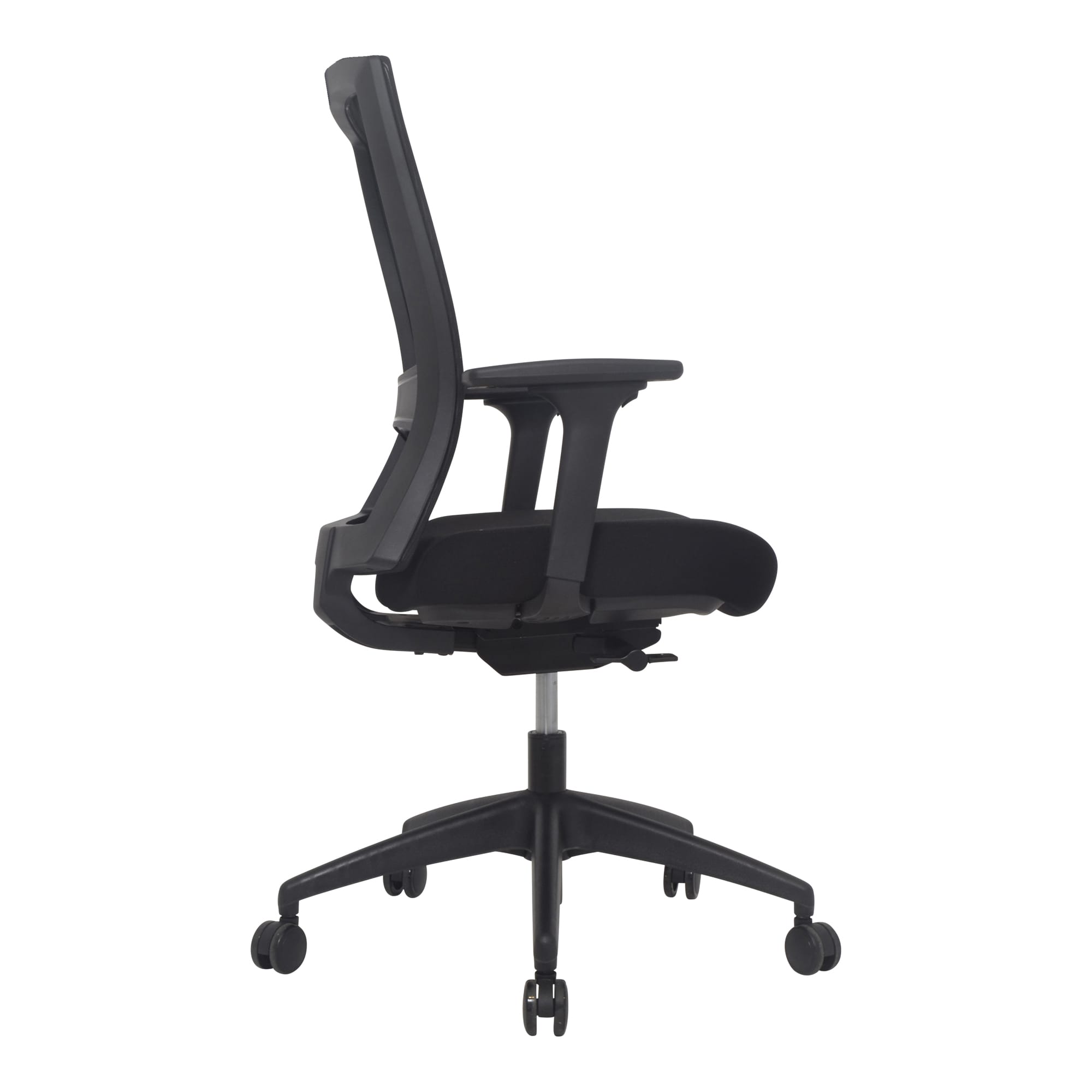
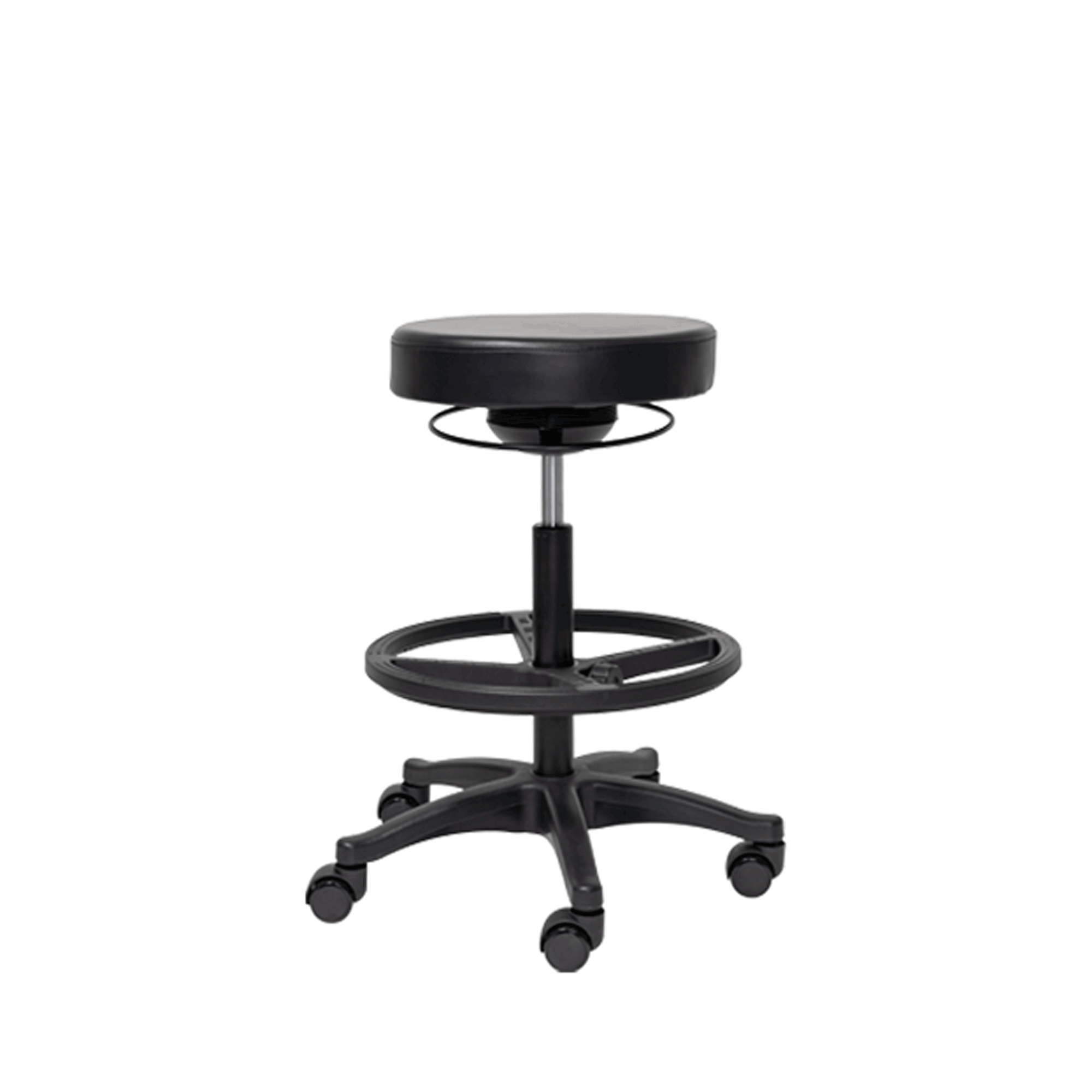
Furniture in social spaces can also deliver an ergonomic boost, and the Konfurb Halo ottoman is designed for informal collaborative work.
The Konfurb Halo is durable and functional, creating a stylish hub for employees to work together, share ideas, and socialise.
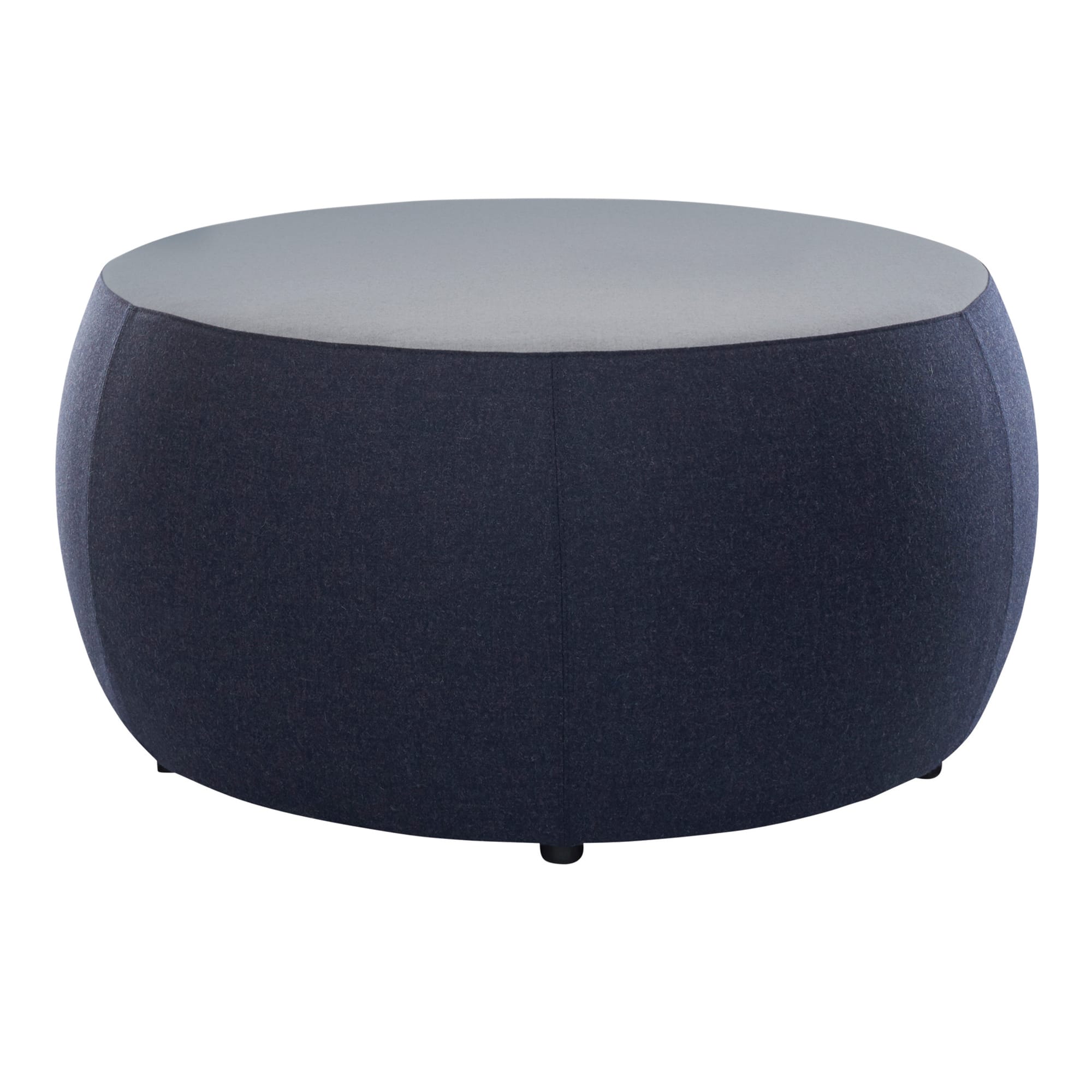
Explore our range of ergonomic seating in a wide range of materials today at: buroseating.com/our-products


